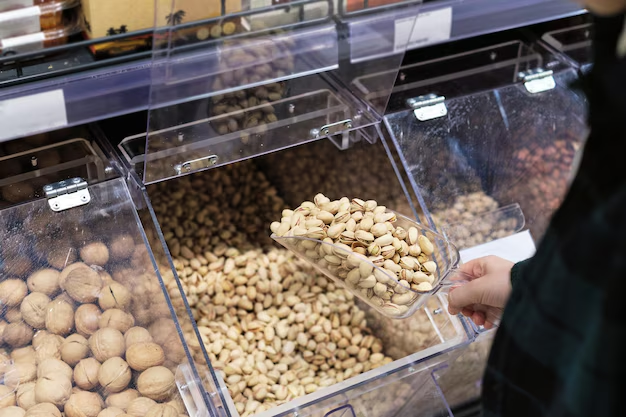The Ultimate Guide to Soaking Beans: How Long Can You Refrigerate Them?
Beans are a cornerstone in many diets around the world, celebrated for their rich protein content, versatility, and earth-friendly growing profile. Whether you're preparing a hearty bean soup, a colorful salad, or a spicy chili, one often overlooked question remains: How long can you let beans soak in the refrigerator? The answer isn't as straightforward as you might think, and it's important to understand the nuances of storing beans to ensure their quality and safety. In this comprehensive guide, we'll delve into this topic and provide valuable insights into related aspects of bean storage, preparation, and uses.
🌟 Why Soak Beans?
Before diving into the specifics of storage, let’s explore why soaking beans is recommended. Soaking beans is a traditional method that serves several purposes:
- Reduces Cooking Time: By allowing the beans to absorb water, you significantly reduce the amount of time required to cook them.
- Improves Texture and Flavor: Soaking can lead to beans that are more evenly cooked with a better taste.
- Increases Digestibility: This process helps break down complex sugars responsible for intestinal discomfort in some individuals.
- Nutrient Accessibility: Soaking can help reduce certain anti-nutrients, making the beans more nutritious and easier to digest.
🕒 How Long Can You Refrigerate Soaking Beans?
The Quick Answer: Generally, it's safe to soak beans in the refrigerator for up to 24 hours. However, this range can fluctuate slightly based on a few factors:
H3: Factors Influencing Soaking Time
- Bean Variety: Different beans absorb water at different rates. Hard beans like chickpeas may need longer, while smaller varieties like lentils require less time.
- Temperature: Ensuring your refrigerator is set to the right temperature (around 35-38°F or 1-3°C) is key to safe soaking.
- Water Condition: Using cold, filtered water helps maintain bean quality during extended soaking.
Pros and Cons of Extended Soaking
Extended soaking (beyond 24 hours) can cause:
- Bean Splitting: Over-soaked beans might become too soft, losing their texture.
- Fermentation: There’s a potential for fermentation, particularly if the refrigerator temperature fluctuates.
- Nutritional Impact: While minor, extended soaking might leach out some nutrients that dissolve in water.
If you accidentally leave beans soaking too long:
- Inspect for Odors and Sliminess: If beans develop an unpleasant smell or slimy texture, it’s best to discard them.
- Rinse Thoroughly: If there's no off-putting odor, a good rinse might still leave them usable.
🏠 Home Soaking Methods
Overnight Soaking
Method: Place beans in a bowl, cover them with water, refrigerate for 8-24 hours. Benefits: Retains quality, maximizes convenience, common in recipe preparations.
Quick Soak
Method: Boil beans for a few minutes and let them sit in hot water for 1-2 hours. Benefits: Time-efficient for unexpected cooking plans, reduces need for long refrigeration.
Hot Soak
Method: Combine boiling and soaking, leading to even more effective rehydration and cooking readiness. Benefits: Balances flavor retention and cooking efficiency.
📦 Storing Soaked Beans
Proper storage is vital to ensuring the beans are not only tasty but also safe to consume.
Refrigeration
- Optimal for Short-Term: Once soaked, beans can be stored in their soaking liquid or drained and kept in a separate container. Ensure airtight coverage.
- Labeling: Always label containers with the soaking start time to keep track of storage duration.
Freezing
- For Extended Storage: Soaked beans can be drained and frozen. Once ready to use, simply thaw and cook as usual.
- Pro Tip: Portion beans before freezing for convenience and to avoid repeated thawing.
🍽️ Practical Uses for Soaked Beans
- Casseroles and Soups: Pre-soaked beans blend seamlessly into these hearty dishes without prolonged cooking.
- Salads: Cold bean salads benefit from the tender yet firm texture of soaked legumes.
- Mash and Purees: Soaked beans are easier to process into creamy dishes, making them ideal for dips and spreads.
📋 Bean Soaking Quick Tips: A Handy Summary
Here's a quick-reference table of key tips for soaking beans in the refrigerator:
| Tip | Details |
|---|---|
| 🕑 Ideal Soak Duration | Aim for 8-24 hours in a cold fridge for best results. |
| ❄️ Consistent Temperature | Keep your fridge at 35-38°F (1-3°C) to maintain bean integrity. |
| 🚰 Use Fresh Water | Change the soaking water once if soaking extends beyond 12 hours. |
| 🚫 Avoid Consistent Re-Freezing | Check beans before re-freezing; altering temperature can impact quality. |
| ✅ Thorough Rinsing | Always rinse beans before cooking to remove residual anti-nutrients and starch. |
🌿 Final Thoughts
Understanding how long you can let beans soak in the refrigerator is central to preserving their quality, flavor, and safety. These leguminous gems are not only a vital nutritional element but also a versatile ingredient in a myriad of culinary dishes. By mastering the art of bean soaking and storage, you ensure that your meals are both delicious and nourishing. Whether you're preparing for a family feast or a simple weekday dinner, these insights into bean soaking are sure to enhance your culinary toolkit and leave your taste buds satisfied.
